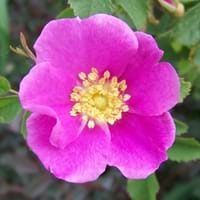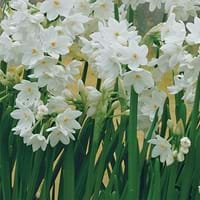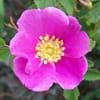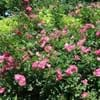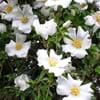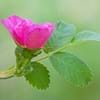Life Span
Perennial
Annual
Type
Flowering Plants
Bulb or Corm or Tuber
Origin
Central America, Northern America
Mediterranean, Northern Africa
Types
Not Available
Not Available
Habitat
disturbed sites, Roadsides, stream banks, Woods
Grassland, Hillside, Pastures, Riverbanks, Rocky areas, Scrubs, Woods
USDA Hardiness Zone
Not Available
3-9
AHS Heat Zone
Not Available
9-1
Sunset Zone
Not Available
21,22
Habit
Upright/Erect
Clump-Forming
Flower Color
Baby Pink, Lavender, Pink, White
White, Salmon, Ivory
Flower Color Modifier
Bicolor
Bicolor
Fruit Color
Non Fruiting Plant
Sandy Brown
Leaf Color in Spring
Green, Gray Green, Dark Green
Green
Leaf Color in Summer
Green
Light Green
Leaf Color in Fall
Green, Gray Green, Dark Green
Several shades of Green
Leaf Color in Winter
Green, Dark Green
Light Green
Leaf Shape
Pinnate
Linear
Plant Season
Spring, Summer
Spring
Sunlight
Partial shade, Partial Sun
Full Sun, Partial Sun
Growth Rate
Medium
Medium
Type of Soil
Clay, Loam
Clay, Loam, Sand
The pH of Soil
Alkaline
Acidic, Neutral, Alkaline
Soil Drainage
Well drained
Well drained
Bloom Time
Spring, Summer
Early Spring, Spring
Tolerances
Wet Site
Drought
Where to Plant?
Container, Ground, Pot
Container, Ground, Pot
How to Plant?
Seedlings, Stem Planting
From bulbs
Plant Maintenance
Medium
Medium
Watering Requirements
Keep the ground moist but not water-logged
Requires regular watering
In Summer
Lots of watering
Lots of watering
In Spring
Moderate
Moderate
In Winter
Average Water
Average Water
Soil pH
Alkaline
Acidic, Neutral, Alkaline
Soil Type
Clay, Loam
Clay, Loam, Sand
Soil Drainage Capacity
Well drained
Well drained
Sun Exposure
Partial shade, Partial Sun
Full Sun, Partial Sun
Pruning
cut main flower spike, Remove dead branches, Remove dead or diseased plant parts
Remove damaged leaves, Remove dead branches, Remove dead leaves
Fertilizers
Apply 10-10-10 amount, as it is a flowering plant, use high phosphorous content fertilizer
All-Purpose Liquid Fertilizer
Pests and Diseases
Grasshoppers
Red blotch
Plant Tolerance
Drought, Wet Site
Drought
Flower Petal Number
Single
Single
Foliage Texture
Medium
Medium
Foliage Sheen
Matte
Matte
Attracts
Birds, Small mammals
Butterflies
Allergy
Constipation, Diarrhea, Headache, Heartburn, Nausea, Pain and fatigue, Stomach pain, Vomiting
Not Available
Aesthetic Uses
Bonsai, Bouquets, Cottage Garden, Showy Purposes
Showy Purposes
Beauty Benefits
Good for skin, Skin Problems
Not Available
Environmental Uses
Air purification, Food for birds
Air purification
Medicinal Uses
Astringent, Diuretic, Laxative, Vitamin C
Healing
Part of Plant Used
Flowers, Rose Hip
Flowers
Other Uses
Making Perfumes, Used as Ornamental plant, Used for its medicinal properties
Used for bedding in gardens
Used As Indoor Plant
Yes
Yes
Used As Outdoor Plant
Yes
Yes
Garden Design
Feature Plant, Mixed Border
Cutflower, Foundation, Houseplant, Mixed Border, Rock Garden / Wall
Botanical Name
Rosa woodsii
NARCISSUS papyraceus
Common Name
Woods Rose, Interior Rose
Paperwhite Narcissus
In Hindi
Woods Rose
paperwhite narcissus
In German
Woods Rose
Narcissus Pperwhite
In French
Woods Rose
Narcissus Pperwhite
In Spanish
Woods Rose
Narciso Pperwhite
In Greek
Woods Rose
Νάρκισσος Pperwhite
In Portuguese
Woods Rose
Narciso Pperwhite
In Polish
Woods Rose
Narcyz Pperwhite
In Latin
Woods Rose
Narcissus Pperwhite
Phylum
Magnoliophyta
Magnoliophyta
Class
Magnoliopsida
Liliopsida
Order
Rosales
Asparagales
Family
Rosaceae
Amaryllidaceae
Clade
Angiosperms, Eudicots, Rosids
Angiosperms, Asparagales, Monocots
Tribe
Not Available
Not Available
Subfamily
Not Available
Amaryllidoideae
Number of Species
Not Available
Not Available
Difference Between Woods Rose and Paperwhite Narcissus
If you are confused whether Woods Rose or Paperwhite Narcissus are same, here are some features about those plants to help you choose better. Many people think that these two plants have the same characteristics, but one can see Woods Rose and Paperwhite Narcissus Information and learn more about it. Fertilizers required for proper growth of Woods Rose are Apply 10-10-10 amount and as it is a flowering plant, use high phosphorous content fertilizer, whereas for Paperwhite Narcissus fertilizers required are All-Purpose Liquid Fertilizer. Hence, one should know the basic difference between Woods Rose and Paperwhite Narcissus if you are planning to have them in your garden to enhance its beauty.
<
Flowering PlantsImportance of Woods Rose and Paperwhite Narcissus
Want to have the most appropriate plant for your garden? You might want to know the importance of Woods Rose and Paperwhite Narcissus. Basically, these two plants vary in many aspects. Compare Woods Rose and Paperwhite Narcissus as they differ in many characteristics such as their life, care, benefits, facts, etc. Every gardener must at least have the slightest clue about the plants he wants to plant in his garden. Compare their benefits, which differ in many ways like facts and uses. The medicinal use of Woods Rose is Astringent, Diuretic, Laxative and Vitamin C whereas of Paperwhite Narcissus is Healing. Woods Rose has beauty benefits as follows: Good for skin and Skin Problems while Paperwhite Narcissus has beauty benefits as follows: Good for skin and Skin Problems.
Compare Facts of Woods Rose vs Paperwhite Narcissus
How to choose the best garden plant for your garden depending upon its facts? Here garden plant comparison will help you to solve this query. Compare the facts of Woods Rose vs Paperwhite Narcissus and know which one to choose. As garden plants have benefits and other uses, allergy is also a major drawback of plants for some people. Allergic reactions of Woods Rose are Constipation, Diarrhea, Headache, Heartburn, Nausea, Pain and fatigue, Stomach pain and Vomiting whereas of Paperwhite Narcissus have Not Available respectively. Having a fruit bearing plant in your garden can be a plus point of your garden. Woods Rose has no showy fruits and Paperwhite Narcissus has no showy fruits. Also Woods Rose is flowering and Paperwhite Narcissus is not flowering . You can compare Woods Rose and Paperwhite Narcissus facts and facts of other plants too.
